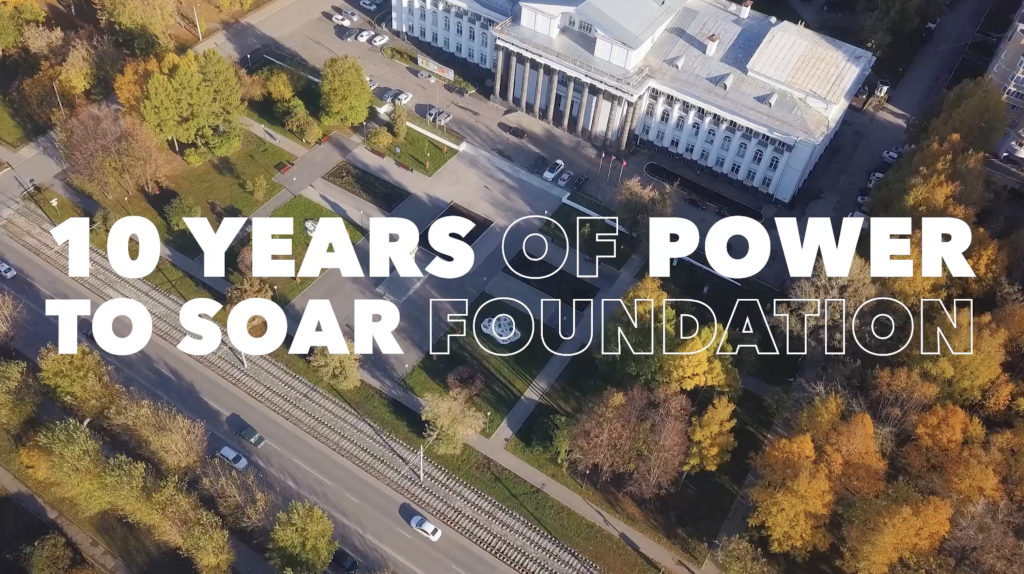Can bio parents claim a foster child as a dependent? This question often arises when navigating the complexities of tax regulations and family responsibilities. Understanding the eligibility criteria outlined in the Internal Revenue Code is crucial, as it defines what qualifies a child as a dependent. Factors like residency, relationship, and financial support play pivotal roles in determining whether a foster child can be claimed.
The article explores key considerations, including the requirement to provide at least half of the child’s support and ensure they’ve lived in the home for more than six months of the tax year. It also addresses potential conflicts if multiple parties attempt to claim the child. By clarifying these rules, readers can gain insight into their tax filing options and avoid common pitfalls.
Key Takeaways
- Biological parents can claim a foster child as a dependent only if they meet strict IRS criteria, including residency, financial support, and relationship tests.
- The child must live with the taxpayer for more than half the tax year to satisfy the IRS residency requirement.
- Taxpayers must provide over half of the child’s financial support, excluding government subsidies, to qualify for a dependency claim.
- Legal placement documentation from an authorized agency is essential for proving eligibility for dependency claims.
- Tie-breaker rules apply in cases where multiple parties attempt to claim the same child, prioritizing biological parents or those providing the most financial support.
- Proper record-keeping of placement agreements, expenses, and shared custody arrangements is crucial to avoid tax disputes or errors.
Table of Contents
Understanding Dependency Claims for Foster Children
Navigating dependency claims for foster children involves understanding specific eligibility rules and requirements. According to the Internal Revenue Code (IRC), a foster child must meet certain criteria to qualify as a dependent, which includes age, residency, relationship, and support tests. These criteria ensure that foster children are adequately cared for before being claimed on tax returns.
To satisfy the residency requirement, a foster child must live with the taxpayer for more than six months of the tax year. State or local government agencies often help foster care placements, which are documented through formal placement agreements. These agreements are crucial for establishing the legal relationship needed for dependency claims. Without such documentation, proving eligibility becomes difficult.

Financial support plays a significant role in dependency claims. Taxpayers must provide more than half of the foster child’s total financial support, excluding government subsidies received for the child’s care. Examples of qualifying expenses include food, clothing, education, shelter, and medical expenses not covered by other sources. Keeping detailed records of these expenditures helps validate claims and avoids disputes during tax filing.
Foster children must also meet specific age criteria. Generally, they must be under age 19 or a full-time student under age 24. If they’re permanently and totally disabled, age restrictions do not apply. Also, the child cannot file a joint tax return unless it’s solely to claim a refund, and they shouldn’t be considered a qualifying child for another taxpayer with a higher claim priority under tie-breaker rules.
Complications may arise when multiple parties attempt to claim the same child, such as biological parents, previous foster parents, or relatives. Only one individual can claim the foster child as a dependent in a single tax year. If contested, priority is typically determined by tie-breaker rules, giving preference to the person maintaining the closest relationship or providing the most substantial financial support.
Taxpayers should also note the implications on filing status. Claiming a foster child as a dependent may qualify individuals for Head of Household status, which can provide significant tax benefits. But, biological parents claiming a foster child as a dependent isn’t permitted if the child did not live with them for over half the year.
By understanding these factors, prospective foster parents and other caregivers can navigate dependency claims effectively, ensuring compliance with IRS regulations while maximizing potential tax benefits.
Eligibility Criteria for Claiming a Foster Child
Understanding the eligibility criteria for claiming a foster child as a dependent is essential for biological parents. The IRS has set specific requirements, including residency rules, financial support obligations, and legal placement conditions. Meeting these criteria ensures compliance while unlocking valuable tax benefits.
Requirements for Residency and Financial Support
Residency plays a pivotal role in dependency claims. A foster child must reside with the taxpayer for at least 183 nights, or over half the year, to meet the IRS residency test. Temporary absences, such as those for school or vacations, don’t count against this requirement. In shared custody or temporary placement scenarios, establishing which party meets this condition is crucial.
Financial support is another key factor. To qualify, the taxpayer must provide over half of the foster child’s overall support during the tax year. Qualified support includes costs for essentials like food, clothing, and shelter. Payments received from government agencies, such as foster care subsidies, aren’t regarded as support provided by the taxpayer or the child.
Keeping detailed expense records helps taxpayers prove they meet this financial requirement. Foster parents can itemize costs related to the child—such as school supplies or healthcare services—ensuring documentation is robust. This step becomes particularly important in contested claims or when multiple parties seek to claim the same foster child.
Legal Placement and Documentation
For any foster child to qualify as a dependent, the placement must occur through a legal agreement with an authorized entity. These entities can include state or local government agencies, a court order, or tribal government organizations. Without formal placement documentation, the foster parent—or biological parent—cannot satisfy the relationship test outlined in IRC Section 152.
Maintaining updated placement records ensures eligibility is preserved. Taxpayers should retain court orders or agency agreements as primary documentation. Plus, saving receipts and records for various care-related expenses bolsters the claim. While subsidies or child-only grants are not part of the financial support equation, they still need to be documented separately for clarity.
The legal relationship between the foster child and taxpayer is foundational. If a foster child’s care arrangement or legal status changes mid-year, ensuring that updated legal agreements reflect these changes becomes vital for tax filing accuracy.
Can Biological Parents Claim Foster Children as Dependents?
Biological parents can claim foster children as dependents if they meet certain IRS criteria, even in cases where the child resides with foster parents. These claims are subject to strict guidelines under the Internal Revenue Code (IRC), which defines a “qualifying child” through specific tests, including age, residency, and financial support.
Situations Where Bio Parents May Qualify
Biological parents qualify for claiming a foster child as a dependent by meeting the IRS’s dependency tests. First, the age test requires the child to be under 19 at the year’s end, under 24 if they’re a full-time student, or any age if permanently disabled.
The residency test mandates the child live with the biological parent for over half the tax year. Temporary absences for medical care or educational purposes don’t count against this requirement. But, this test can complicate claims when the child has spent significant time in foster care, making precise record-keeping essential. Parents sharing custody must carefully determine how the child’s living situation affects residency eligibility.
Finally, the support test specifies that biological parents must provide over half the child’s financial support. Expenses like food, housing, and medical care count, but government assistance does not.
Tie-Breaker Rules in Claim Disputes
When multiple parties qualify to claim the same child, tie-breaker rules resolve disputes. The IRS gives priority based on relationship: biological parents usually take precedence over non-relatives, like foster parents.
If biological parents share custody, the parent who resided with the child for more nights during the year earns the claim. When both parents share equal custody, the claim goes to the parent with the higher adjusted gross income (AGI). These rules aim to ensure fairness and prevent overlapping claims.
Accurate records, an understanding of IRS guidelines, and collaboration among eligible parties help navigate dependency disputes. Biological parents should plan strategically and evaluate their eligibility thoroughly before filing.
Resolving Dependency Claim Conflicts
Fostering a child is a rewarding and life-changing experience, but it’s natural to feel overwhelmed when considering this journey. Prospective foster parents play a vital role in providing stability, love, and care to children navigating difficult circumstances. With preparation and a supportive mindset, they can overcome challenges and create a nurturing environment.
Embracing the Role of a Foster Parent
Each foster parent’s responsibilities begin with understanding the needs of foster children. Many children in foster care have experienced trauma or instability, affecting their emotional and behavioral responses. A patient approach and consistent reassurance help foster trust and create a safe space where the child feels valued.
Building a connection takes time, especially since some children may be hesitant to bond. Small gestures such as maintaining a routine, celebrating their achievements, or simply listening support the child’s emotional growth. Flexibility and open-mindedness are key, as every child’s background and personality are unique.
Overcoming Challenges with Support
Navigating the foster system involves working closely with child welfare agencies, caseworkers, and biological families. While this can seem daunting, clear communication and collaboration ensure the child’s best interests remain the focus. Training sessions provided by agencies educate foster parents about state regulations and equip them for common challenges.
Support networks are invaluable. Many foster care organizations offer mentorship, peer groups, and crisis resources, so foster parents don’t have to face difficulties alone. Asking for assistance demonstrates strength, not weakness.
Practical Guidelines for a Successful Transition
Preparation sets the tone for a smooth transition. Creating a welcoming space for the child, complete with essentials like clothing, bedding, and school supplies, ensures they feel cared for from the start. While it’s tempting to overprepare, staying open to the child’s preferences fosters a sense of belonging.
Respecting the child’s background is equally important. Foster parents honor their cultural identity by encouraging traditions, food, or celebrations they’re accustomed to. Also, open conversations about their feelings or concerns empower the child to trust their environment.
Encouragement for Prospective Foster Parents
The foster care process challenges and changes everyone involved. Yet, those who choose to foster have the chance to transform lives, including their own. With the right mindset and resources, fostering becomes more than an obligation—it becomes an act of hope, compassion, and resilience.
Wondering if you’re ready? Take one step at a time! Reaching out to your local agency or connecting with experienced foster parents provides clarity. Every successful story begins with the decision to try.
Foster parenting is more than providing a roof over a child’s head — it’s about offering stability, compassion, and hope to children in need. For those considering this journey, it’s essential to prepare for both the rewards and the challenges that come with it.
Key Tax Benefits for Foster Children
Every foster child enters your home carrying a unique story. Their experiences, shaped by transitions and trauma, could make them cautious or even withdrawn at first. A warm, predictable environment filled with patience and understanding can help them feel secure.
Start by ensuring the basics are in place: a clean, comfortable space that feels like their own. Add personal touches, such as age-appropriate bedding or a few toys. Listening to their preferences for these small details can help them feel seen and valued.
It’s also helpful to explain house rules early on. Consistent routines and boundaries give foster children a sense of structure, but these need to be framed kindly. Saying, “We always eat dinner together at 6 pm because family time is important here,” provides clarity while fostering belonging.
Remember, building trust takes time. Children have an innate ability to sense genuine care, so approach them with authenticity.
Navigating the Emotional Journey
Fostering can touch your heart in profound ways, but it may also test your emotional resilience. Many children may struggle to process their emotions due to previous experiences. They might express this through anger, sadness, or withdrawal.
Parents can benefit from learning trauma-informed strategies. Remaining calm during outbursts and validating the child’s feelings — for example, saying, “It’s okay to feel upset; I’m here to help you work through it” — can foster understanding.
It’s equally important for foster parents to take care of their own emotional health. Joining a support group or speaking with other foster families can provide valuable insights and affirm that challenges are a normal part of this journey.
Collaborating with Agencies and Families
A foster parent’s role often involves collaborating with child welfare agencies, schools, and the child’s biological family. Navigating these relationships is critical, as they play a key role in the child’s well-being.
Stay open to communication with caseworkers to align on the child’s needs. Attend meetings, ask questions, and remain proactive in decisions that affect the child. Schools are also vital partners; sharing observations about the child’s progress can ensure they receive any necessary educational support.
In many placements, working alongside biological families is part of the process. This aspect can sometimes feel challenging, but when managed thoughtfully, it benefits the child. Focus on supporting reunification efforts while fostering healthy boundaries.
Practical Tools to Succeed
- Educate yourself: Books and workshops about childhood trauma and fostering offer valuable knowledge.
- Focus on patience: Changes aren’t immediate. Small victories, such as a smile or a shared laugh, are signs of progress.
- Use resources: Many organizations provide free training, support groups, or even financial assistance for foster parents.
- Keep records: Detailed notes about a child’s behavior, appointments, or needs can make collaborations and transitions smoother.
Is becoming a foster parent challenging? Sure. But fostering the growth, stability, and joy in a child’s life can be one of the most fulfilling journeys a person can take. And while it’s not always easy, the difference you make is immeasurable. Will you take the first step?






